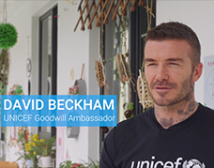UNICEF Innovation is convening conversations around the intersection of high growth tech industries and social good. These conversations will bring together corporations, designers, entrepreneurs, and other international development partners to examine how technology and business expansion in emerging markets can deliver expanded profit while also supporting social development and inclusion in these countries. The main areas of focus will be:
Mobile Financial Services
The ability to send money, save money, and receive money easily is at the core of the global economy. Mobile technology can make these transactions faster and more efficient. Yet 2.5 billion people or half the world's adult population remain unbanked, operating almost entirely in the cash economy, using cash, physical assets (e.g. jewelry, livestock) or informal providers (e.g. money lenders, payment couriers) to meet their financial needs.
Across emerging markets, mobile payments through the use of smart phones and other mobile devices have already brought enormous changes and are said to be one of the biggest revolutions in financial services. Consumers are using mobile financial services for saving and transferring money, banking and shopping.
The market potential:
-
2.5 Billion people in the world do not have a formal bank account
-
6 Billion people have access to mobile phones worldwide. Regionally, there are 2.5 billion mobile phone users in the Asia/ Pacific Region and 650 million in Africa.
-
The global mobile payment transaction volume is expected to rise from US $235.4 Billion in 2013 to US $721 Billion in 2017
-
Mobile payment users worldwide are expected to grow to 450 million users in 2017.
-
Mobile payment users in Africa are forecasted to rise to 101.3 million users, and in the Asia/ Pacific region 163.6 million by 2016.
Mobile network operators, startups, credit card companies, and traditional banks all want to conquer this space. However, from an emerging market standpoint, the only future forward financial service that has had significant uptake at a large and lucrative scale is M-Pesa, developed by mobile operator Safaricom and is the most developed mobile payment system in the world. With over 20 million users, 43% of Kenya's GDP flows through the system. M-Pesa has been implemented across Kenya, Tanzania and South Africa, and expansion efforts into Afghanistan, India, and Egypt are underway.
Visa is developing a plug and play mobile money platform that will make it easy for financial institutions and mobile operators to offer mobile financial services to consumers in India and Rwanda. In Nigeria, UNICEF has deployed a system to send mobile payments to healthcare workers addressing polio in remote and rural areas. Many other government programs in emerging markets are looking to mobile payments as a way to pay frontline workers and provide support to the most marginalized communities.
Despite these efforts, unsuitable regulatory environments, missing contextual knowledge, lack of an agent network to cash out, and inability to compete against traditional forms of money transfers are seen as constraints to develop suitable solutions for these new markets that are characterized by informality, largely unbanked populations and dominance of small businesses.
Identity
For a child, formal identity in the form of a birth certificate can mean the difference between sickness and health, safety and danger, and even life and death. Yet, 1 in 3 children (230 million) in the world have never had their birth registered.
Birth registration is central to ensuring that children are counted and can access to basic services such as health, social security and education. Knowing the age of a child is also central to protecting them from child labour and child marriage, being treated as adults in the justice system, forcible conscription in armed forces, trafficking and sexual exploitation. Later on in life, a birth registration certificate is the step to citizenship, land ownership, and voting rights.
Technology is already being used to help register and report on births. For example, in Nigeria, UNICEF has used simple mobile technology to report on over 13 million births over the past 15 months, and in the Philippines, South Sudan and Uganda, social workers use android devices to register separated and unaccompanied children and reunite them with their families. In India, the government is creating a database of personal biometric identities of its 1 billion citizens. Here, identity will be able to be verified and authenticated using a cell phone, smart phone, tablet or any other device hooked to the internet.
Beyond using technology to capture our formal identities, technology (especially mobile) is capturing more and more of our social identity through our search history, mobile applications, and now through the internet of things. Advertising largely pays for technology today, and this information about our identity is critically important for advertisers to better define their audiences and deliver more relevant messaging. Google reportedly makes about $20 per user largely through advertising and Facebook made $1.2B through mobile advertising last quarter, with this number growing 40% each quarter.
The issue of identity - both formal and social, a voice, access to essential services, authentication, privacy, security, advertising and technology growth are increasingly linked together. What are the pitfalls and what are the opportunities?
Transportation
Transportation is key to economic development. If you're a farmer and you can't affordably get your product to market then you only produce what you and your community can consume. If you're a girl or young woman and the informal transportation networks are too dangerous you may not go to school or get a job that requires you to go too far from home. If your child is sick, you may not be able to forfeit a day's work or cost to get you and her to a hospital that is more than a day's walk from your home.
Being able to move people and goods around is essential to participate in economic activities and reach important facilities such as schools, health centers and markets. While long-term investments in infrastructure are key, the area of transportation is also ripe for innovation.
Using technology, there is an opportunity to expose informal transportation networks. How can we make them safer and more efficient and can entrepreneurs build businesses around this?
Researchers and students at the University of Nairobi, the Center for Sustainable Urban Development at Columbia University, and the Civic Data Design Lab at MIT produced a map of the informal transportation in Nairobi – and the underlying data behind it – after carrying cell phones and GPS devices along every route in the network.
In Kosovo, a UNICEF supported a youth-led project established the first-ever publicly accessible website on Pristina bus transportation by harnessing open-source technology, significantly contributing to the quality of life in Pristina, as well as facilitating the public services of the Municipality of Pristina.
In rural areas, there is also opportunity. Brands that get their product even to the most remote corners of the world such as Coca-Cola are already using their extensive transportation networks to deliver life-saving medicines. Could they also use their networks to carry goods and people back to urban centers and make a profit in the process? Could this thinking extend to creating businesses that get people to hospitals, children to schools, and people to work? What do the disruptions we are seeing in the sharing economy in the form of startups such as Uber, Lyft, SideCar, and AirBnB mean for emerging markets?
Wearable Technologies for Social Good - beyond fitness
Wearables are diverging and converging around fitness and health, and it remains to be seen where the concentration will lie. At the same time, form factor is still in question – ergonomics vs fashion is the debate of the day, with uncertainty as to which is more important.
Both fitness and health tie in to the quantified self movement– but what is the goal of the quantified self beyond data? Where is the insight? Data is useless without a narrative. What insights will be the most helpful? Will it be about behavior change? Disease prediction and prevention? What about personal identity and security?
Who is the target population – those already fit? Those wishing to become fit? Those who need medical advice and assistance, who are managing medical conditions? What about those in or heading towards a health or social crisis, due to social, political or environmental conditions?
And what about people/users beyond Silicon Valley? Beyond the US? How can the wearables and quantified self movement be beneficial to those living in poverty globally? How can the leaders in wearables today work together with organizations like UNICEF to bring the technology to those who might most benefit, but whose primary use case is not the number of exercise points or sleep hours they are logging?
Learning
Anybody needs to be able to learn anytime, anywhere. This reality presents a global market where quality learning is a desired commodity for everyone throughout their lifetime, as a child, student, consumer, employee or entrepreneur. There are, however, few and limited goods for learning. Children are not being taught the skills they need to thrive in the 21st century; companies cannot fill their positions while unemployment rate remains high...The market size is big and quickly expanding in both global north and south, in urban as well as rural settings. The worldwide market for E-Learning may reach some $51.5 billion by 2016. While the US market is considered most mature, regions experiencing the fastest expansion are Asia, Eastern Europe, Africa and Latin America, with growth rates at 17.3%, 16.9%, 15.2%, and 14.6%, respectively (with the 2013 market size at 7100m, 729m, 333m, 1400m USD).
The public and private sector share converged interests in this area. With increased traction of low cost technology solutions and improved connectivity, emerging markets have vast potential for crowd-sourced and user generated content, placing them high in the learning industry chain. UNICEF provides access to and understanding of these markets and consumers. The private sector has the ability to produce better content, technology solutions and business models faster. This provides opportunity for the public and private sector to work together. Indeed, with the inflow of an estimated $6 billion of venture capital over the past five years, E-Learning is not only being called for by governments and development agencies, also being driven by startup dot-com entrepreneurs, big corporations and academia alike.
Not one organization has figured out a system to deliver quality learning at low cost and at scale. This is a challenge and opportunity that can only be taken on through collaborative efforts by technology companies, content providers, platform builders etc. How might we create a business model that is profitable and sustainable, and brings quality learning content to learners globally?
































